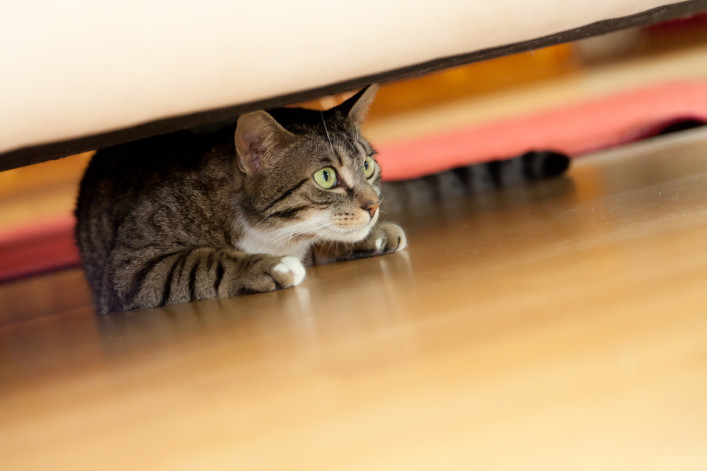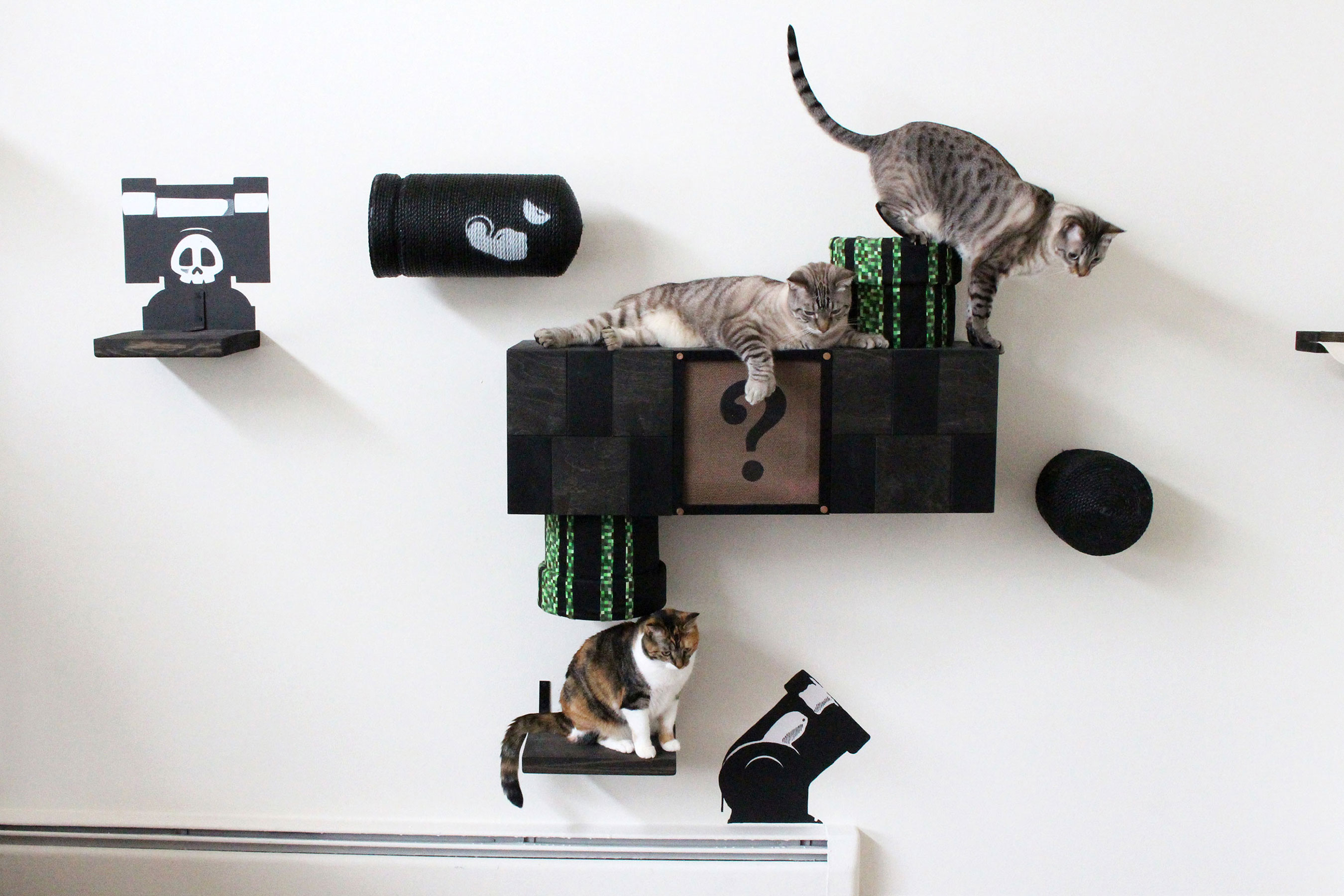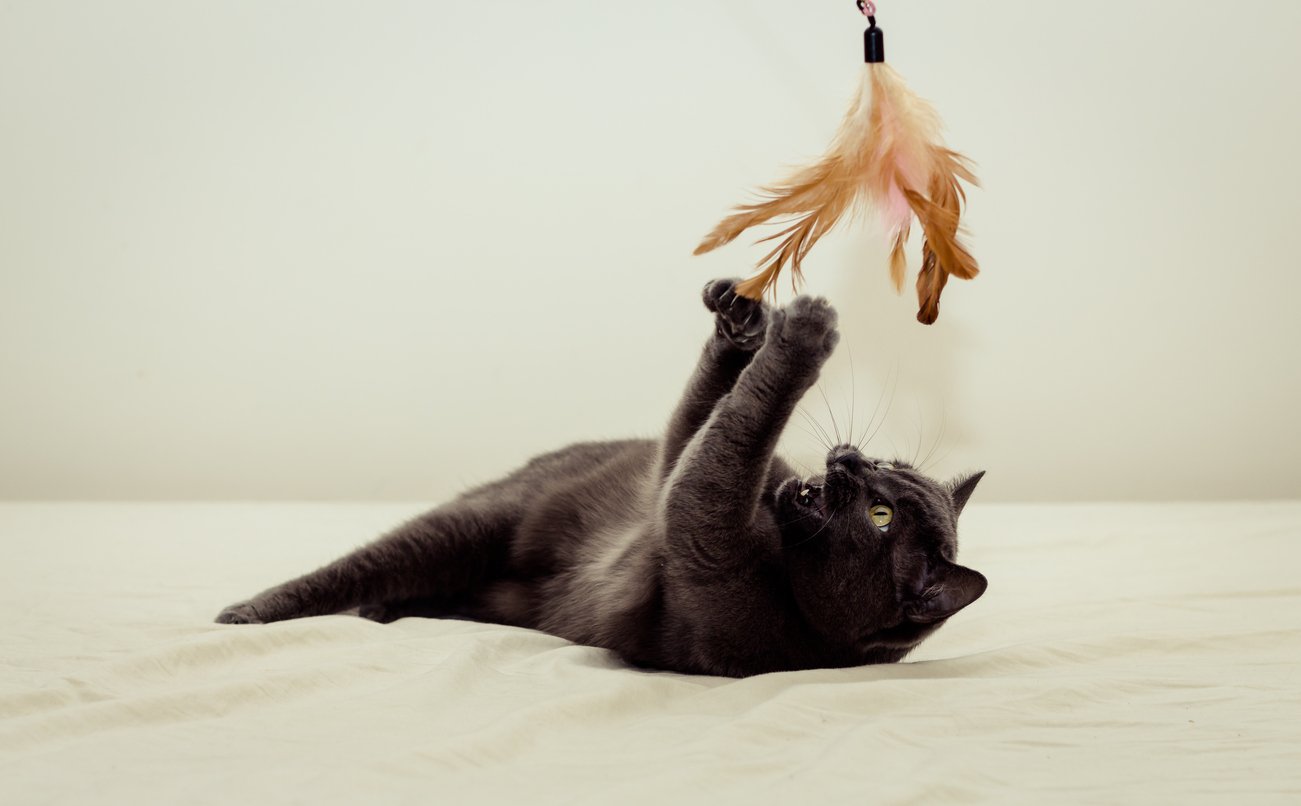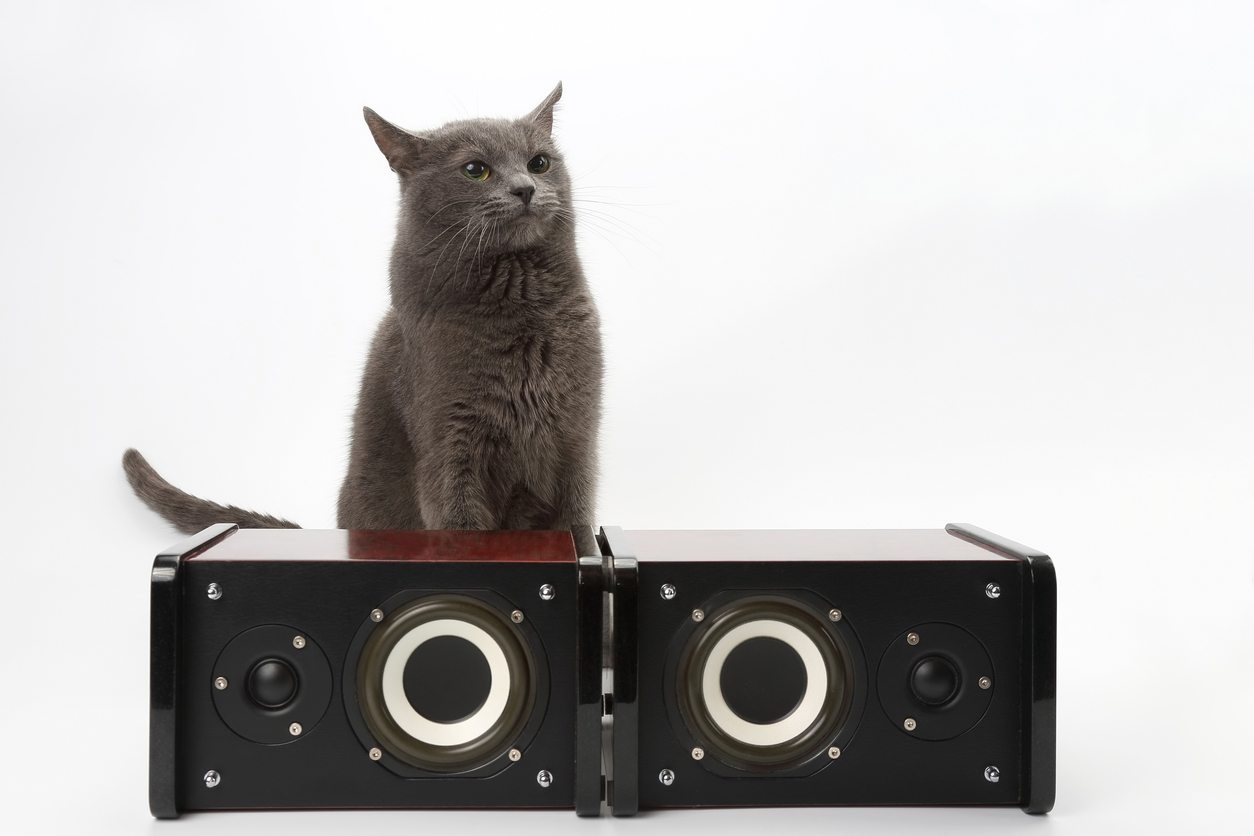Here are 4 crucial tactics for calming down your anxious or aggressive NYC apartment cat

iStock
Cats are tragically misunderstood. We sometimes treat them like fuzzy stress aids, there for us to scratch on the chin, get nuzzled by, and occasionally use as subjects for cute cellphone videos. But cats are predators—domesticated some, sure—and for them life inside a New York City apartment can get brutally dull. Every cat's different, but this boredom can manifest as anxiety, jumping-off-the-walls fear, and/or serious aggression.
If it sounds like I may be writing from experience, that's because I am. But my troubled feline associate Brittany won't be my sole focus here, since my wife and I have yet to fully sort out her very special needs. Instead, Brittany's travails inform this piece, and I've also gathered some tips from pet professionals that will hopefully be a bit more broadly applicable. One form of behavior I've been fortunate enough not to experience is our cat using the floor for a litter box, but I understand this too can be symptomatic of indoor-cat ennui.
[Editor's note: This story was originally published in February 2018.]
One other note: vets do prescribe medications for cats with behavioral issues, including sedatives and what are essentially antidepressants. Yes, Prozac Nation extends to our pets. But figuring out whether and how to medicate your cat is something that you should do with a professional, and ideally only after you've tried other techniques first. Also, know that there's no single pill that will solve the larger problem alone. If there was, we'd have tried kitty Prozac on poor Brittany eons earlier. Instead, you should treat medication as one tool in a larger treatment plan, if you end up using it at all.
And with that out of the way, here are some tactics for alleviating cat anxiety to try out, as provided by Mary Molloy, a certified dog trainer and dog and cat behavioral consultant and founder of Nirvana Tails, as well as some gleaned from a workshop handout for a recent New York veterinary conference.

1. Make your apartment more exciting
Physical changes to your space are one major way of spicing up life for your cat companion. This can be as simple as making sure to roll up your blackout shades when you're leaving for the day.
"If there’s a window that actually looks out at something other than a wall that can make for great kitty TV," Molloy says. "So if there’s a window, make sure they can see out of it."
Also, making high-up surfaces accessible is important. You can do this with existing furniture, as in moving your file cabinet close enough to your bookshelf for your cat to jump up, and you can also go the consumer route, buying a cat tree, all the way up to a Super-Mario-inspired set of wall-mounted platforms and tubes.
The bottom line for is, as Molloy says,cats "like to be up, they like to be able to see what’s going on. They’re often most comfortable up there."
Molloy recommends wall-mounted cat beds and platforms from the site Fundamentally Feline. A 24-inch cat run sells there for $38.

2. Active play is important
Cats need stimulation, and throwing a toy on the ground once isn't going to cut it.
"They should have a couple of ten-minute play sessions a day," Molloy says. "That’s with you holding the other end of the wand and giving them active play."
A way to make some of the playtime passive for you and active for the cat, I've found, is to tie a string to yourself while you're walking around the apartment doing chores. Still, this is not quite a substitute for a fully engaged game of cat-and-fake-mouse.
There are some automated toys out there, but Molloy isn't so keen on them.
"It's a limited range of what they can do," she says.
One big strike against automatic toys is that they tend to do the same things again and again, and what cats crave is novelty. For that reason, it's a good idea to switch up the toy you use from day to day, and keep the ones you're not using stashed away.
Another way to introduce more play is by making the cat work for its food using a food puzzle. Food puzzles are available online and at discerning pet stores. Molloy recommends the site FoodPuzzlesForCats.com for information on all the different kinds, and also on ones you can make yourself (they can be as simple as a cardboard box with a hole in it).
"If it’s not on [the site], you probably don’t need to know about it," Molloy says.
On the first few outings, it's important to give the cat an idea of how the puzzle works, lest she just get frustrated and leave it alone.
"You can’t just put down the toy and tell your cat to go to it," Molloy says. "They have no idea what it is and how to use it."

3. The occasional cat music can help
There's actually music out there that is specifically designed to calm anxious cats. Molloy cautions that there's not a lot of research on the efficacy of various types of music advertised as cat-soothing, but she swears by something called iCalmCat, a battery-operated speaker that comes with prerecorded cat music.
"I use iCalmCat for when it’s a stressful situation, for when there’s contractors over, and it conks them right out," she says.
YouTube is also chockablock with what's advertised as cat anxiety music in hours-long increments, if you'd rather not pay for it. Your mileage may very, but I've had decent luck with it when having guests over. The downside is having to listen to the stuff, which has a way of making you the human feel a bit medicated.
If there's some loud noise outside that seems to be stressing the cat out—pile-driving, say—white noise is another option.
4. When in doubt, talk to a vet
"Any sort of behavior problems that’s affecting your life or your cat’s life, a trip to the vet should be the first thing," Molloy says.
Cats hide pain well, and obviously can't talk, so behavioral issues may be your best indicators that something is amiss. If a vet deems your cat to be healthy and just acting weird, you can also talk to an animal behaviorist. A good rule of thumb is that as much as you think you're playing with your cat, you could probably be playing more.
"My big thing is I would love it if everyone understood that cats need attention, maybe not as much as dogs, but much more than we think of them needing," Molloy says.
You should definitely seek the help of a professional if the cat's behavior is affecting its or your quality of life, and/or if there seems to be a risk of injury to any of the people or animals in the apartment. For more in-depth information on enriching the life of your indoor cat, check out the Ohio State University vet school's resource page here. The company Fear Free Pets also offers a lot of free information for owners of anxious cats.
You Might Also Like



























